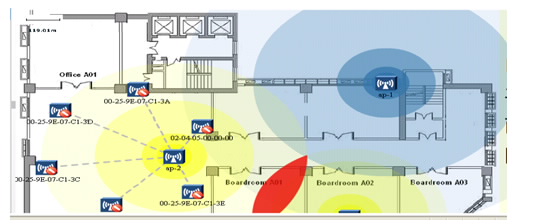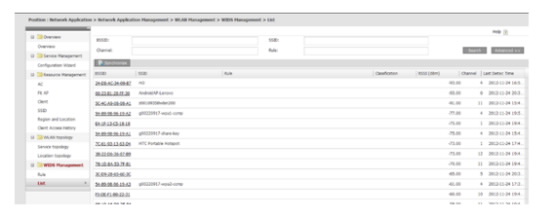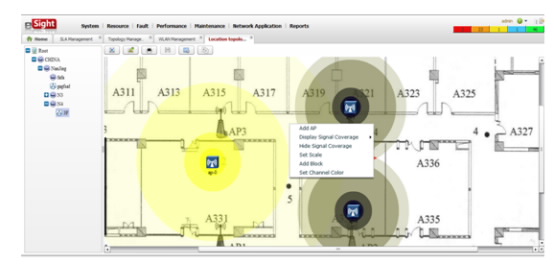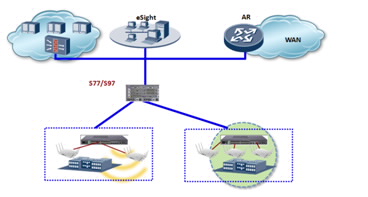eSight WLAN Manager integrates the management of wired and wireless networks.

In eSight physical topology, users can monitor switches, routers, security devices, IT devices, H3C devices, and Cisco devices in a unified manner. By centralized management of wired and wireless devices, such as ACs, power over Ethernet (PoE) switches, and fit APs, users can directly view device connections, status, and alarms on the entire network.
Deploying services on wireless devices in batches improves the management efficiency.
Users can use the wizard to deploy services, which greatly accelerates service deployment. Users can manage Huawei ACs to configure WLAN services. AP configurations are stored on the AC. After tunnels are set up between the AC and APs, the APs obtain the configurations from the AC.

Various topology views help users to understand the wireless network status in different dimensions.
Service topology: The service topology shows the connections between the AC, APs, and STAs and marks rouge APs. Users can view the detailed information about the AC, APs, STAs, and rouge APs and diagnose wireless service faults (such as by the ping operation).

Location topology: The location topology shows the hotspots and radio signal coverage scope and marks rogue APs and collision domains. The color indicates the frequency band, and the color depth indicates signal strength. The red area indicates collision domains. In the location topology, users can set blocks to test the impact of different blocks on signal attenuation.

Wireless Intrusion Detection System (WIDS) provides the detailed interference source list and the influences of these interference sources on normal APs.

Provides quick service adjustment to cover hotspots and calibrate radio.
If a coverage hole exists on the network, users can use eSight WLAN manager to quickly deploy services on new APs to cover hotspots.

When a carrier's APs or private APs occupy the planned channel and interfere with APs on the live network, users can use eSight WLAN Manager to quickly change the channel if negotiation is unavailable.

Quick AP fault diagnosis

eSight can restart, replace, and restore APs to factory settings in batches.
- During WLAN network debugging or when APs are faulty, users can remotely restore APs to factory settings in batches using eSight.
- During WLAN network debugging or when APs are upgraded, users can remotely restart APs in batches using eSight.
- If an AP is faulty, users can quickly replace the AP in eSight. The replacement does not affect AP configurations.
Resource statistics, meeting O&M requirements
- Entire-network resource statistics: line chart for online users, showing the top 5 accessed fit APs and SSIDs, top 5 device alarms, and physical resource statistics on the entire network.
- AC statistics: line chart for online users by AC, showing AP information, domain information, and top 5 AC alarms
- AP statistics: top 5 AP alarms and AP performance counters including the number of terminals connected to APs, AP physical attributes, AP traffic, and radio traffic
- SSID statistics: number of APs, number of VAPs, and number of terminals connected to APs
- Region and location statistics: total number of APs, number of online APs, and number of online STAs by region and location.
eSight WLAN Manager is installed on the same server as eSight Unified Network Management Platform standard or professional edition. Therefore, the configuration requirements for their running environment are the same.



























